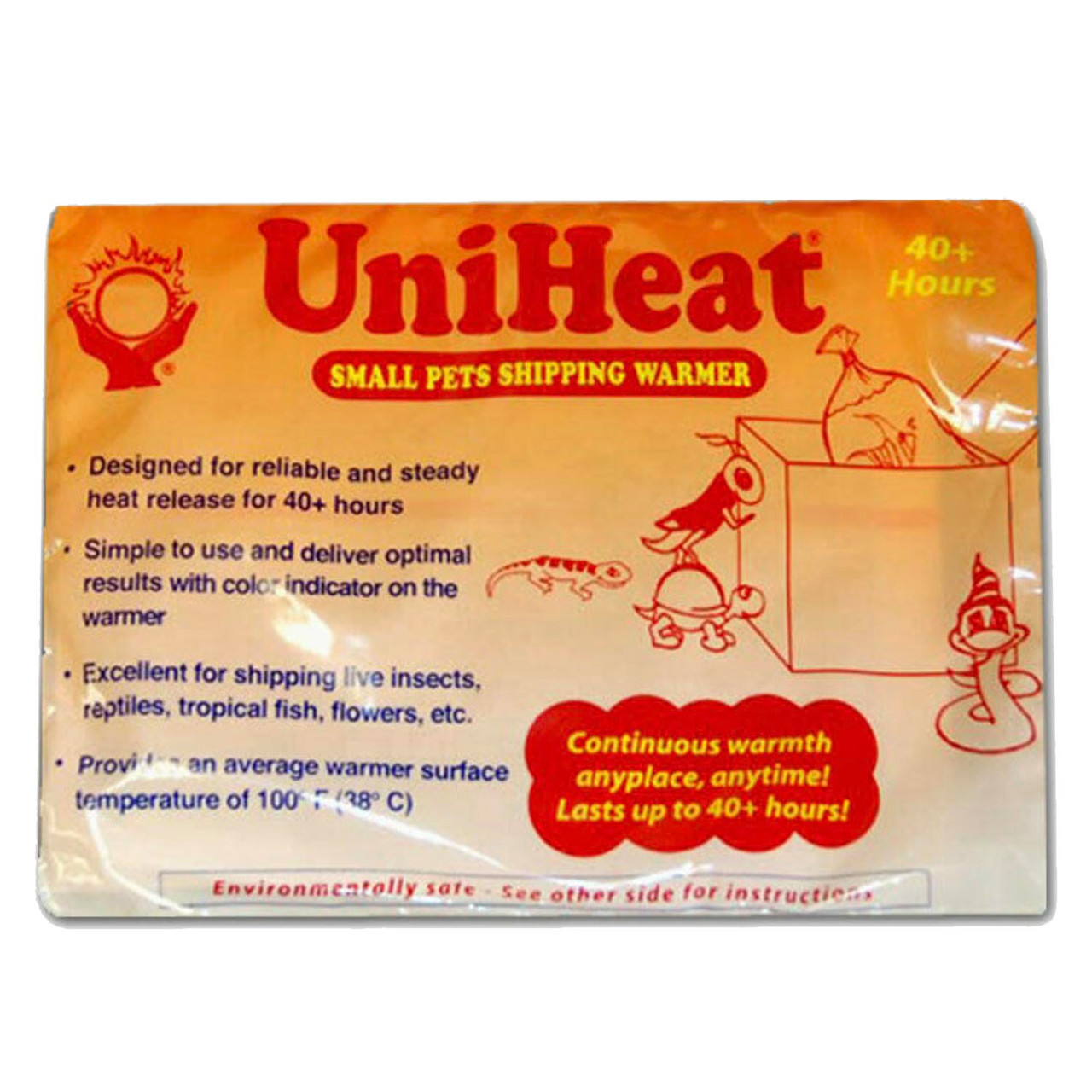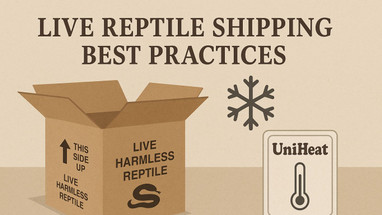Posted by UniHeatPacks on 22nd Aug 2025
Live Reptile Shipping Best Practices
Shipping live reptiles demands careful planning. Proper temperature control, insulation, and compliant packaging keep animals safe and help you meet carrier requirements. Use this guide to plan an overnight shipment and choose when (and how) to use a UniHeat shipping warmer.
Quick Compare: Temperature, Timing, and Heat Pack Choice
| Route Conditions | Recommended Action | Heat Pack |
|---|---|---|
| Below 38°F daytime highs (origin or destination) | Do not ship; wait for safer weather | None |
| 38–69°F daytime highs | Insulated box + overnight service | Use a 40-hour shipping warmer |
| 70–91°F daytime highs | Insulated box; typically no heat pack | None |
| 92–100°F daytime highs | Hold for pickup at staffed carrier facility; avoid residential delivery | None (consider cold pack for amphibians only) |
| Over 100°F daytime highs | Do not ship; wait for cooler weather | None |
Temperature bands align with widely used specialist guidelines for live reptile shipping; always check species-specific needs and current forecasts.

Carrier and Compliance Essentials
- USPS: Reptiles (all snakes, turtles, poisonous reptiles) are nonmailable per Publication 52.
- FedEx: Allows certain live animals (e.g., non-venomous reptiles and amphibians) with packaging approval and program requirements.
- UPS: Accepts live animals only via next-day services; species eligibility and conditions apply—verify before shipping.
- Regulatory: Follow applicable wildlife laws (e.g., Lacey Act) and airline standards (IATA Live Animals Regulations) for air transport and protected species.
Always confirm current policies on carrier sites and with your account rep before shipping.
Box Setup and Insulation
- Use a sturdy cardboard box with tight-fitting foam insulation (top, bottom, and all sides).
- Provide ventilation; heat packs require oxygen to function.
- Contain the animal in a secure deli cup or cloth bag (species-appropriate) and cushion to prevent movement.
- Label clearly: “Live Harmless Reptile” and “This Side Up.”
Using a Heat Pack Safely
- Activate the warmer 30–60 minutes before packing; confirm gentle heat before sealing.
- Wrap in paper and tape the pack to the underside of the foam lid, red vent line facing inward; never place directly against the animal container.
- Create a thermal gradient by positioning the pack at one end of the box so a cooler side remains available.
- Do not overuse heat packs; one 40-hour pack is standard for a typical insulated overnight shipment.
Frequently Asked Questions
Can I ship reptiles via USPS?
No. USPS lists reptiles (e.g., snakes, turtles, poisonous reptiles) as nonmailable. Use approved carriers and services instead.
What carrier should I use?
Use a carrier that permits live reptiles and an overnight service. FedEx accepts certain non-venomous reptiles with packaging approvals. UPS limits live animal transport to next-day services; check species eligibility.
Which heat pack should I use?
In cool weather (about 38–69°F), a 40-hour shipping warmer is the standard choice for an insulated, overnight reptile shipment. Avoid warmers in mild/hot weather to prevent overheating.
Where do I place the heat pack?
Tape it to the underside of the foam lid (vent line facing inward), wrapped in paper, and never in direct contact with the animal container.
Should I insure my live shipment?
Major carriers typically do not insure live shipments directly. Consider specialized brokers that offer live arrival insurance; always read terms and temperature requirements.
Prepare for safe, compliant shipments: browse UniHeat shipping warmers and supplies.

